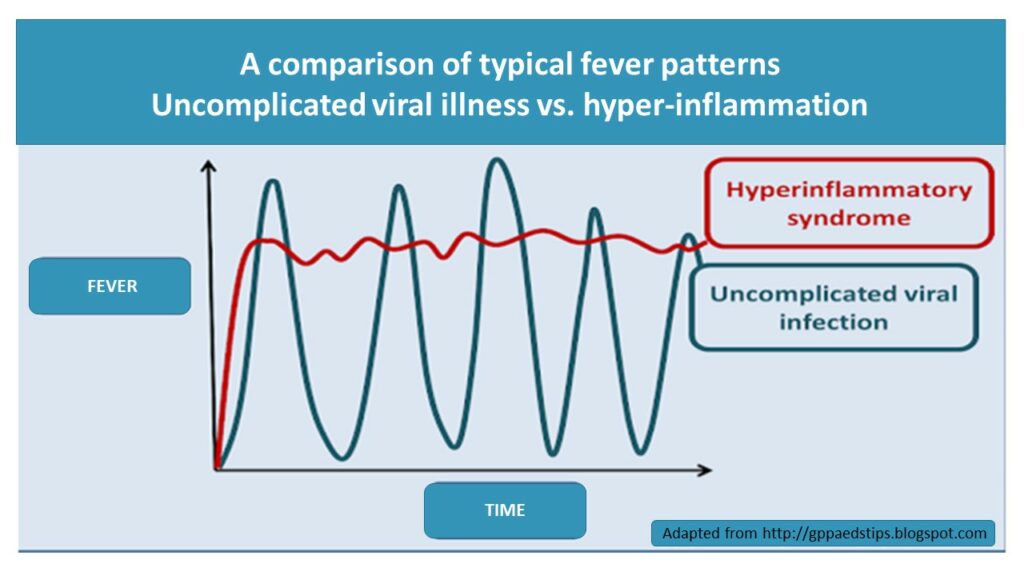
Symptoms of common conditions shared with COVID – 19 infection – avoid fear response by being better informed
May 16, 2020
VITAMIN D: THE SUNSHINE VITAMIN
May 26, 2020Pandemic of COVID -19, seems to suggest it is less common, less severe and less infectious in children. Recently a new phenomenon of “HYPER INFLAMMATORY SYNDROME” seems to be associated with COVID-19 infection in children.
Since vast majority of cases are not serious, and people are encouraged to self-manage febrile illness at home, it is important to be aware of this serious presentation of COVID-19 early so that appropriate medical assistance should be sought in a timely manner.
Currently the number of cases remains relatively small, but it represents significant number of seriously unwell children.
The serious condition is medically known as Hyper inflammatory Syndrome and it should be recognized where it manifests. This presentation has features of KAWASAKI DISEASE [a rare disease].
Two most specific features to recognize are:
- Pattern of fever – Unrelenting fever
- Increased breathing rate (Tachypnoea)
Unrelenting Fever
In cases reported of suspected hyper inflammation secondary to COVID-19 infection, fever was noted to have been persistently high[38 – 40 C / 100.4 – 104 F ].
In uncomplicated viral illness pyrexia can be dramatic associated with other features but this is followed by dramatic improvements often with the aid of antipyretic medication.

Tachypnoea
Increased breathing rate (Tachypnoea) is one of the specific features seen in children with hyper inflammatory syndrome.
Uncomplicated viral illness in children do not tend to affect breathing other than in form of a transient tachypnoea while febrile. If unexplained constantly fast breathing is noted this should alert you to seek medical care from qualified health professional.
If specific symptoms are accompanied with some of less specific features, it could be a sign of underlying hyper inflammatory syndrome. The disease can then progress to greater cardiac involvement and its subsequent effect on circulation.
Shock refractory to fluid boluses is a commonly reported feature. The situation brings its own challenges for emergency medicine and children’s care (paediatrics).







